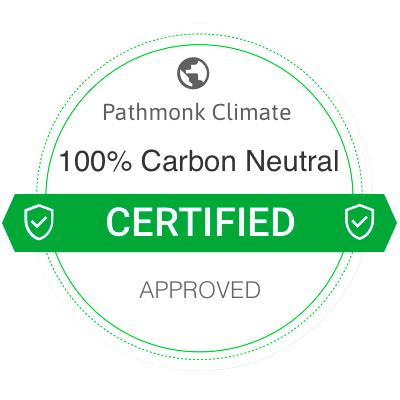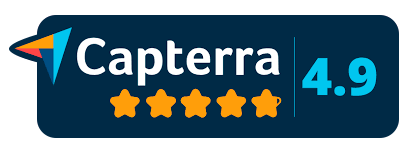
Landing pages are one of the most critical elements of any digital marketing strategy. However, designing a high-converting landing page is a refined dance between user behavior analysis, optimization, and automation – not an easy choreography to follow.
Landing page optimization tools are a good way to ensure you’re on top of every element, without needing extensive coding or manual effort (in most cases, at least).
Some tools might focus more on analytics, while others will offer you practical features for landing page optimization. Here you’ll see how these platforms compare to one another and what is the best choice if you’re looking for higher engagement, conversions and valuable insights on your customer journey.
Let’s dive in 🚀
Table of Contents
Pathmonk

Pathmonk is an advanced landing page optimization tool designed to maximize conversions by creating intent-based personalized experiences in real time, that increase your landing page conversions by up to 180%!
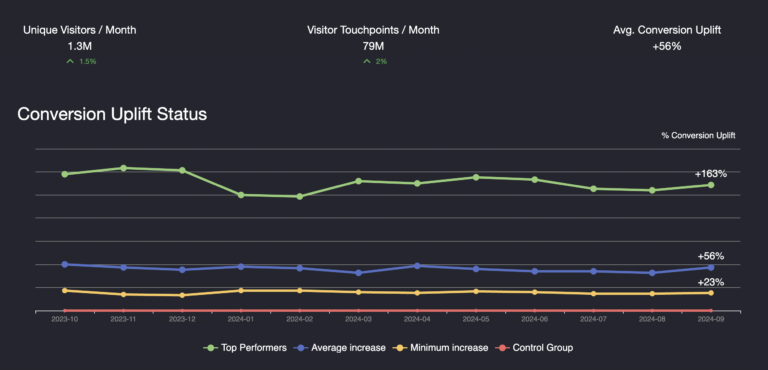
Unlike traditional landing page builders that rely solely on static layouts and A/B testing, Pathmonk leverages behavioral analytics and intent prediction to dynamically adjust landing page experiences based on how users interact with your site. This ensures that each visitor sees the most relevant content, increasing the chances of conversion.
One of the biggest challenges marketers face with landing pages is identifying what truly drives or breaks a conversion. Pathmonk eliminates the guesswork by automatically analyzing visitor intent and presenting personalized content at the perfect moment.

Whether your goal is to generate more leads, demo requests, or purchases, Pathmonk helps guide visitors toward the desired action using content you already have to create micro-experiences that have a real impact on engagement and understanding of user intent. These experiences can be videos, questionnaires, personalized CTAs, product reviews: anything your visitors need to move through the buying journey.
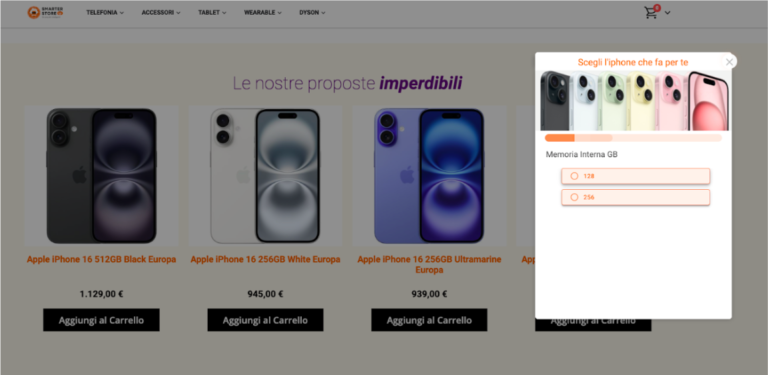
Additionally, with privacy regulations tightening, Pathmonk provides a cookieless technology that allows businesses to re-engage high-intent visitors without relying on outdated tracking methods, making Pathmonk a future-proof choice for marketers looking to optimize their landing page experience.
Benefits:
- Increase conversions from your landing pages – It doesn’t matter where your visitors are coming from, Pathmonk will constantly offer the best experience, optimized for conversions.
- Real-time intent-based personalization – Dynamically adapts CTAs and messaging based on visitor behavior to increase conversions.
- Automated sales funnel optimization – Detects friction points and automatically optimizes the buying journey without manual intervention.
- Higher-quality leads – Focuses on converting engaged visitors into sales-ready leads rather than just capturing generic sign-ups.
- Improved ROI from paid and organic traffic – Ensures that landing pages show experiences that truly match user intent for higher conversions.
Features:
- AI-driven landing page optimization
- Cookieless, automated tracking
- Conversion rate optimization insights
- Advanced buying journey analytics
- Predictive lead scoring
- No-code setup
Increase +180%
leads
demos
sales
bookings
from your website with AI
Get more conversions from your existing website traffic delivering personalized experiences.

Unbounce
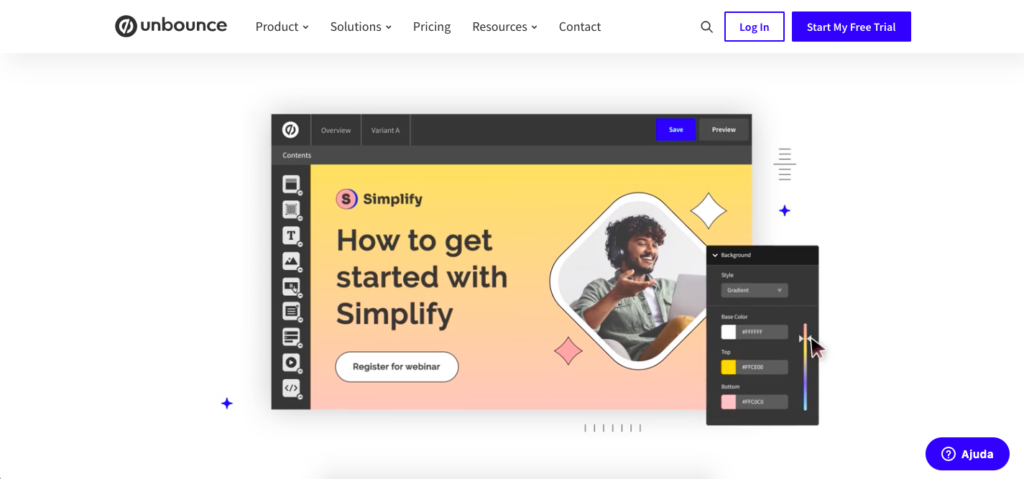
Unbounce is a landing page builder designed to help marketers create and test landing pages without coding. It features a drag-and-drop editor, allowing users to quickly design pages using customizable templates. This makes it a convenient choice for businesses looking to launch campaigns without relying on developers.
One of Unbounce’s key features is A/B testing, which enables marketers to compare different versions of a landing page to see which performs best. Additionally, it offers Smart Traffic, an AI-powered tool that automatically directs visitors to the variant most likely to convert. Unbounce also integrates with a great number of analytics platforms for tracking and lead management.
Despite its strengths, Unbounce lacks real-time visitor intent analysis. Instead, it relies on static A/B testing, requiring users to manually monitor and optimize their pages. While Smart Traffic improves performance over time, it does not offer instant, behavior-based adjustments, making it less adaptable to individual user journeys.
Features:
- Drag-and-drop landing page builder – Create custom pages without coding.
- A/B testing – Test multiple page variations to improve performance.
- Smart Traffic AI – Automatically directs visitors to the best-performing variant.
- Pop-ups and sticky bars – Additional elements to capture leads.
- Marketing tool integrations – Connects with various analytics platforms.
Limitations:
- No real-time visitor adaptation
- Higher cost for AI features
- Limited lead qualification
- Static experience
Hotjar
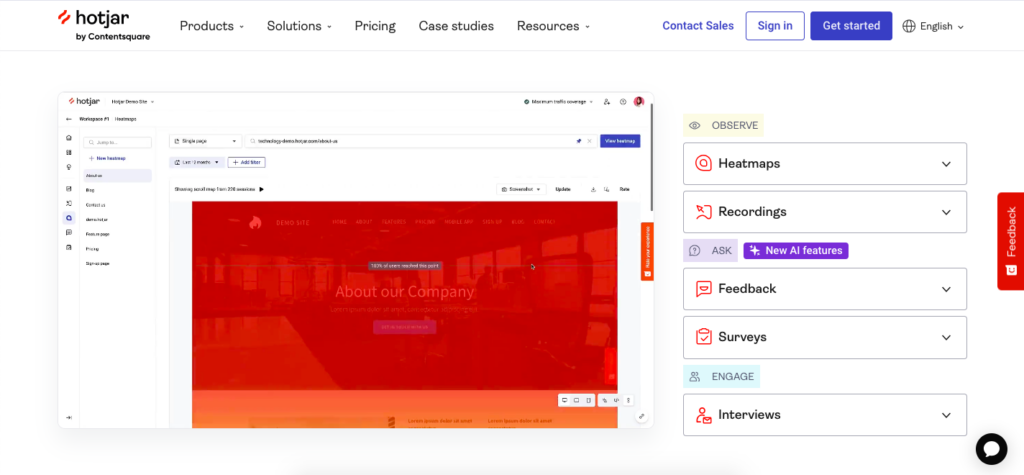
Hotjar is a behavior analytics tool that helps businesses understand how visitors interact with their landing pages. Instead of focusing on page building or A/B testing, Hotjar provides visual insights through heatmaps, session recordings, and user feedback tools. These features allow marketers to see where users click, scroll, or drop off, helping identify usability issues and friction points.
One of Hotjar’s most valuable aspects is its session recordings, which let marketers watch real visitor interactions on their landing pages. This helps uncover hidden obstacles preventing conversions, such as confusing layouts or ineffective CTAs. The platform also includes user surveys and feedback widgets, making it easy to collect insights directly from visitors.
While Hotjar is excellent for diagnosing issues, it does not offer direct optimization features like other landing page optimization tools. Users must manually analyze the data and make adjustments based on their findings. This makes it more of a research tool rather than a real-time optimization solution, requiring marketers to take extra steps to implement improvements.
Features:
- Heatmaps – Visualize where users click, scroll, and interact on landing pages.
- Session recordings – Replay visitor interactions to identify usability issues.
- User feedback tools – Collect on-page surveys and polls to gather visitor insights.
- Form analytics – Track how users engage with lead capture forms.
- Integration with marketing tools – Good integration with complementary platforms.
Limitations:
- No real-time optimization
- Manual implementation required
- No A/B testing functionality
- Not a standalone landing page tool
Free template: CRO testing framework
Organize, prioritize, and execute conversion rate optimization tests with our framework.
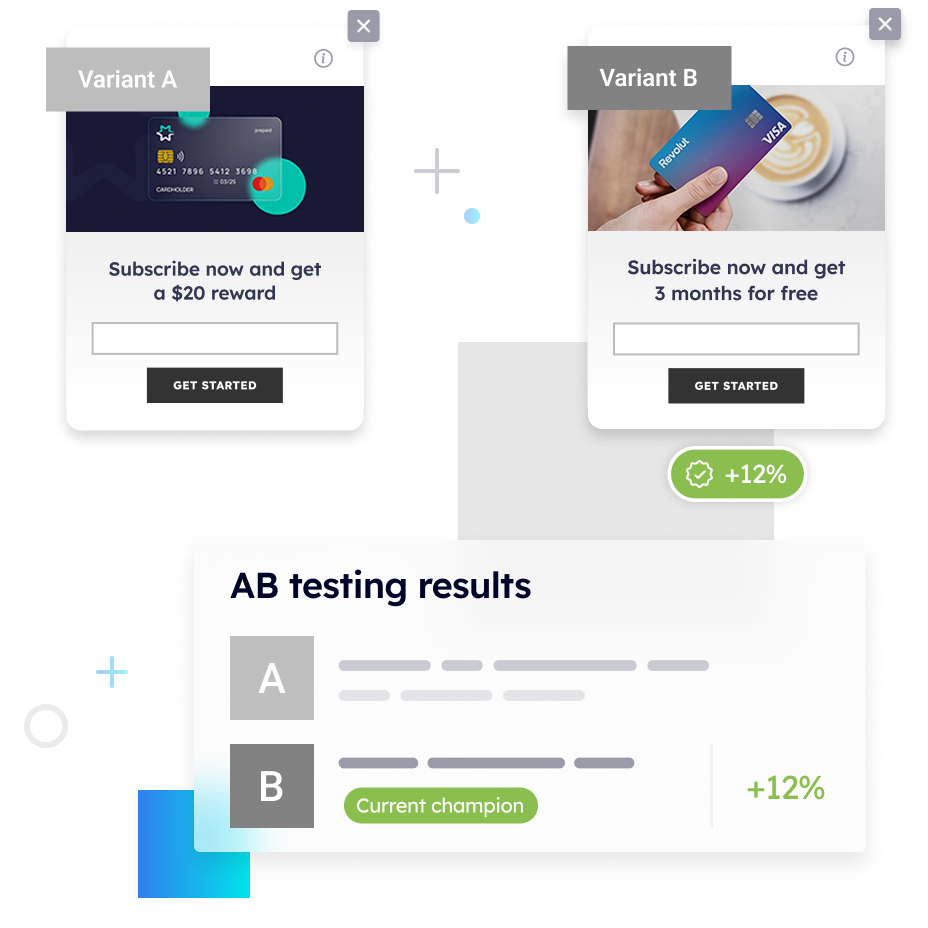
Leadpages
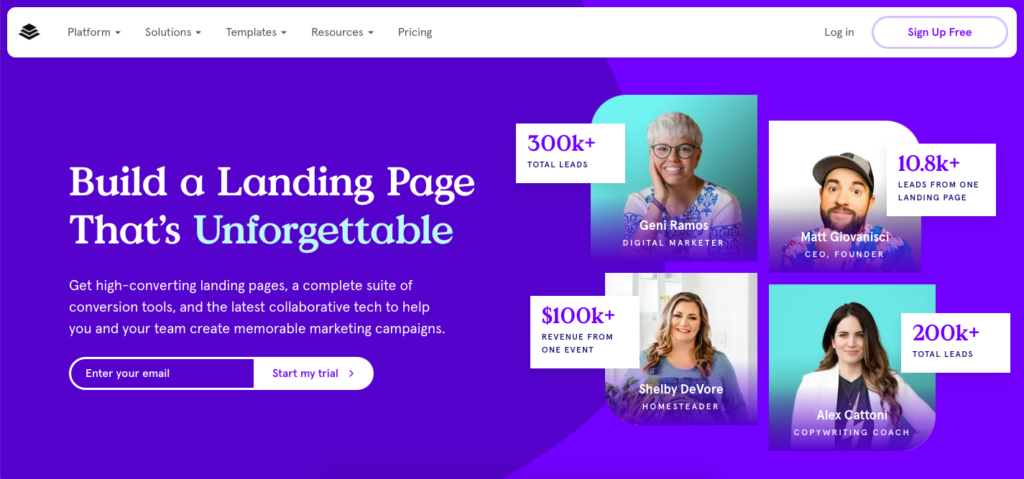
Leadpages is a landing page builder designed for small businesses and entrepreneurs looking to create professional-looking pages without coding skills. It provides a drag-and-drop editor along with a variety of pre-built templates, making it easy for users to launch campaigns quickly. The platform is tailored for lead generation, offering built-in forms and pop-ups to capture visitor information.
A nice feature of Leadpages is its conversion-focused templates, which are designed based on industry best practices. The platform also includes A/B testing capabilities (on higher-tier plans), allowing users to compare different versions of a page to see which one performs better. Additionally, Leadpages integrates with main marketing tools for streamlined lead management.
Despite its ease of use, Leadpages is more of a static landing page builder rather than a dynamic optimization tool. It does not offer real-time visitor adaptation or advanced behavior tracking, meaning marketers must rely on A/B testing and manual adjustments to improve performance over time.
Features:
- Drag-and-drop page builder – Create and customize landing pages without coding.
- Conversion-focused templates – Pre-built designs optimized for lead generation.
- A/B testing (higher-tier plans) – Test different page variations to improve conversion rates.
- Built-in pop-ups and alert bars – Capture leads with additional engagement elements.
- Marketing and CRM integrations – Connects with Mailchimp, HubSpot, and Salesforce.
Limitations:
- No real-time optimization
- A/B testing only available in higher-tier plans
- Limited personalization capabilities
- Basic tracking analytics

Instapage
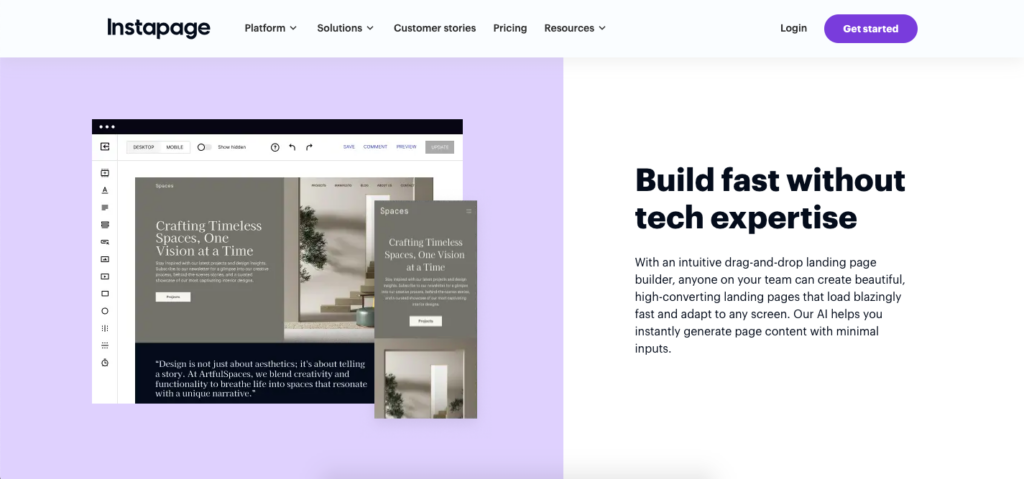
Instapage is a landing page platform designed for businesses that prioritize speed and efficiency in their marketing campaigns. With its drag-and-drop editor and pre-built templates, users can quickly create visually appealing landing pages without requiring design or coding skills. The platform also supports collaboration features, making it ideal for teams managing multiple landing pages.
One of Instapage’s main selling points is its heatmap tracking and A/B testing capabilities, which allow marketers to analyze visitor interactions and optimize their pages accordingly. Additionally, its AdMap™ feature helps align landing pages with ad campaigns, ensuring message consistency across different touchpoints. This makes it particularly useful for businesses running high-budget paid acquisition campaigns.
However, while Instapage provides testing and analytics, it does not dynamically adjust landing pages based on real-time visitor behavior. Optimizing performance requires continuous manual monitoring and testing, which can be time-consuming for marketers who need a more automated solution.
Features:
- Drag-and-drop landing page builder – Create pages without coding.
- A/B testing – Experiment with different designs to improve conversion rates.
- Heatmap tracking – Visualize visitor interactions to identify weak spots.
- AdMap™ feature – Aligns landing pages with paid ad campaigns for consistency.
- Collaboration tools – Allows teams to work together efficiently on landing page projects.
Limitations:
- No real-time visitor adaptation
- Higher pricing compared to competitors
- Steep learning curve
- No built-in lead scoring
OptimizePress
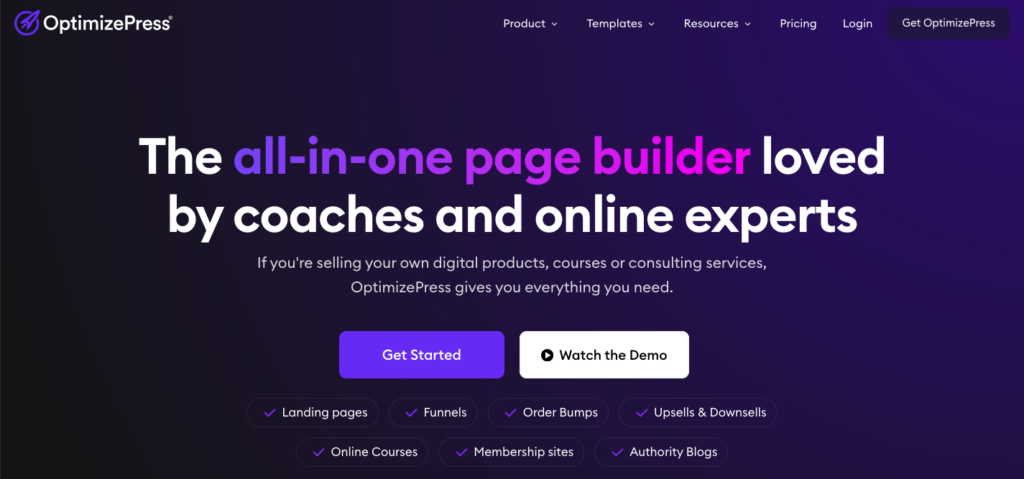
OptimizePress is a WordPress-based landing page builder designed for entrepreneurs, coaches, and small businesses looking to create conversion-focused pages. Unlike standalone SaaS solutions, OptimizePress functions as a WordPress plugin, making it a natural fit for users who already manage their websites within the WordPress ecosystem.

It offers a drag-and-drop editor along with a selection of pre-designed templates tailored for lead generation, sales funnels, and memberships.
One of the key benefits of OptimizePress is its one-time pricing model (for certain plans), which can be more budget-friendly compared to subscription-based landing page builders. It also includes features for creating membership sites and sales funnels, making it a versatile tool for digital marketers and content creators.
However, OptimizePress is limited to WordPress users, meaning businesses using other website platforms will need an alternative solution. Additionally, it lacks advanced AI-driven features and does not offer real-time visitor adaptation, making optimization a manual process rather than an automated one.
Features:
- WordPress integration – Works as a plugin within the WordPress environment.
- Drag-and-drop landing page builder – No coding required for customization.
- Pre-designed templates – Optimized layouts for lead generation and sales funnels.
- One-time pricing option – Avoids ongoing monthly fees (on certain plans).
- Membership site functionality – Supports gated content and subscriptions.
Limitations:
- Only available for WordPress
- No real-time visitor adaptation
- Limited third-party integrations
- Basic analytics capabilities
How to build an AI-ready marketing strategy
Gain the insights and strategies needed to harness the power of AI for marketing success.

ClickFunnels

ClickFunnels is a sales funnel and landing page builder designed primarily for businesses that rely on automated sales processes. Unlike traditional landing page builders, ClickFunnels enables users to create entire sales funnels, including opt-in pages, upsell pages, and checkout pages, all within a single platform.
This makes it particularly popular among entrepreneurs, course creators, and eCommerce businesses looking to guide visitors through a structured buying journey.
One of ClickFunnels’ biggest advantages is its ready-made funnel templates, which allow users to quickly deploy conversion-optimized pages without needing design expertise. It also includes built-in email automation and upsell features, making it an all-in-one solution for businesses that want to sell products or generate leads through multi-step funnels.
However, while ClickFunnels excels at funnel creation, it is less flexible for standalone landing page optimization. The platform focuses more on predefined sales flows rather than dynamic user behavior adaptation, meaning marketers looking for real-time optimization may find it lacking. Additionally, its pricing is higher compared to many traditional landing page builders, making it a costly option for businesses that don’t need full funnel automation.
Features:
- Pre-built sales funnel templates – Ready-to-use funnels for lead generation, sales, and webinars.
- Drag-and-drop page editor – Create and customize pages without coding.
- Built-in email automation – Send follow-up emails and nurture leads directly within ClickFunnels.
- One-click upsells and order bumps – Increase revenue by adding upsell offers during checkout.
- Payment integrations – Works with Stripe, PayPal, and other payment processors.
Limitations:
- Limited flexibility for standalone landing pages
- No real-time visitor adaptation
- Higher pricing
- Basic analytics
Hubspot
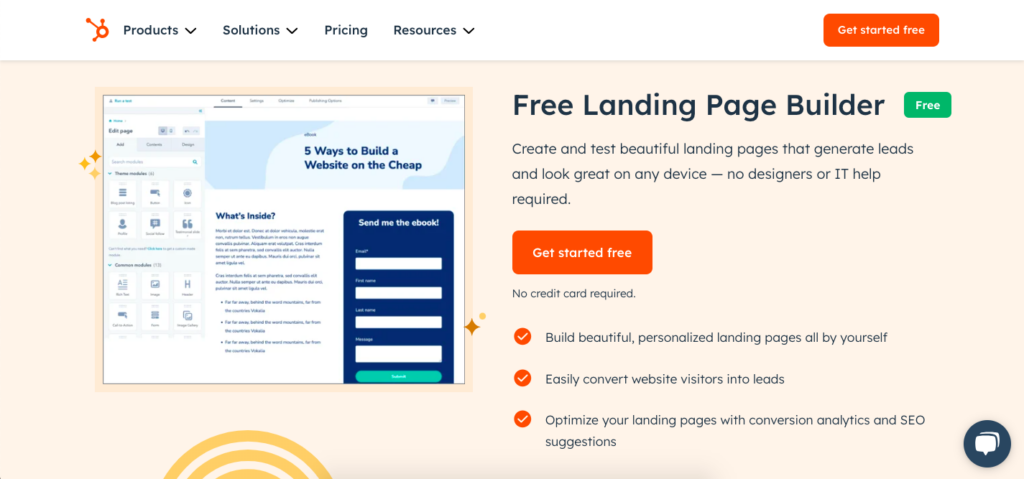
HubSpot is a comprehensive marketing, sales, and CRM platform that includes a landing page builder as part of its Marketing Hub. Designed for businesses looking for an all-in-one inbound marketing solution, HubSpot allows users to create landing pages, manage email campaigns, and track customer interactions—all from a single dashboard.
The platform is particularly popular among B2B companies and businesses focused on long-term lead nurturing. One of the biggest advantages of HubSpot’s landing page builder is its seamless CRM integration, which enables businesses to collect, segment, and nurture leads effortlessly.
Users can also leverage A/B testing, personalization, and analytics to refine their landing page performance over time. Additionally, its automation capabilities make it easy to set up email sequences and lead scoring to optimize follow-ups.
However, while HubSpot offers strong marketing automation, its landing page optimization features lack real-time AI-driven adjustments. Users must manually analyze reports and modify pages based on insights, which can be time-consuming. Additionally, pricing can be a barrier, as advanced features (such as A/B testing and personalization) are only available in higher-tier plans.
Features:
- Landing page builder with drag-and-drop functionality – Create and customize pages without coding.
- CRM integration – Automatically stores and segments leads for better follow-up.
- A/B testing (available in premium plans) – Test different landing page versions for performance improvements.
- Marketing automation – Set up email nurturing campaigns and lead scoring.
- Personalization tools – Customize landing pages based on visitor attributes.
Limitations:
- No real-time visitor behavior adaptation
- A/B testing is not available in free or basic plans
- Higher pricing for full functionality
- Steep learning curve

Landingi
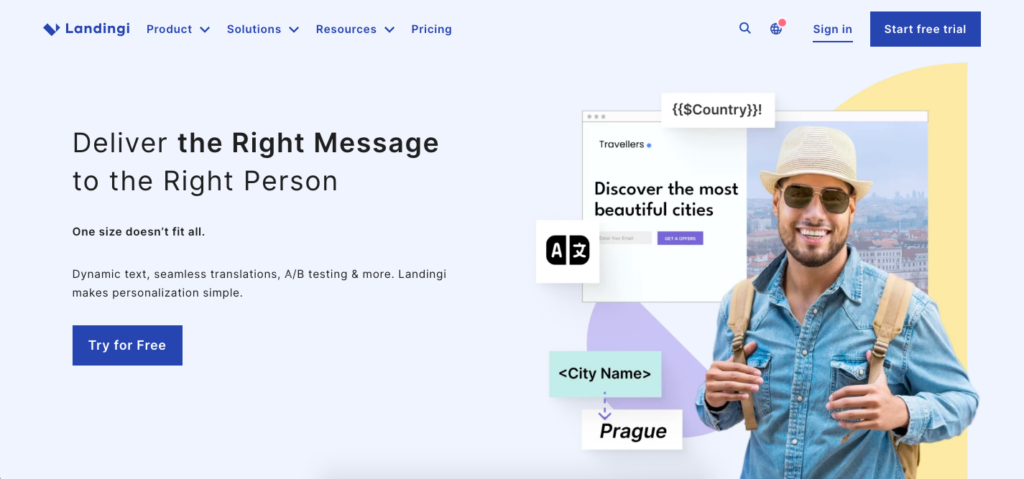
Landingi is a landing page builder designed for businesses that need a straightforward and efficient way to create conversion-focused pages. With its drag-and-drop editor, users can quickly design and launch landing pages without coding. It offers a range of templates optimized for lead generation, making it particularly useful for marketers who need to scale their campaigns quickly.
One of Landingi’s main advantages is its ease of use. It includes built-in tools like A/B testing, pop-ups, and form integrations, allowing businesses to test different page elements and improve conversion rates. Additionally, it supports third-party integrations with other marketing platforms, making it easy to connect landing pages with broader marketing strategies.
However, while Landingi provides basic optimization tools, it does not offer AI-driven personalization. Personalization is possible using parameters that use demographic analytics for dynamic adaptation. Additionally, marketers must rely on manual A/B testing and analysis to refine their landing pages, which can be time-consuming compared to platforms with automated optimization capabilities.
Features:
- Drag-and-drop editor – Build and customize landing pages without coding.
- Pre-designed templates – Optimized for lead generation and conversion.
- A/B testing – Test different page variations to improve performance.
- Pop-ups and lead capture forms – Additional tools to engage visitors.
- Third-party integrations – Connects with platforms like HubSpot, Mailchimp, and Google Analytics.
Limitations:
- No real-time optimization
- Limited dynamic personalization
- Basic analytics
- Some features require higher-tier plans
Free template: customer journey touchpoints
Map your marketing touchpoints and understand your users' journey to conversion across all stages
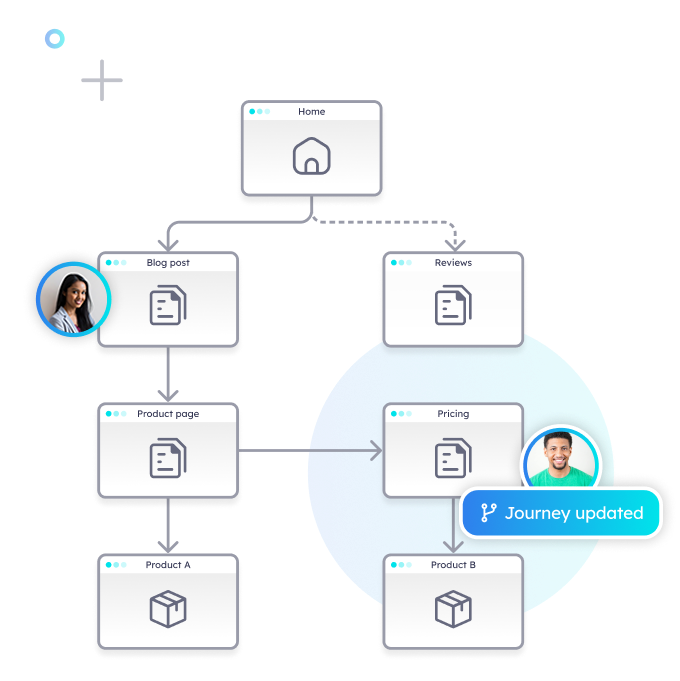
VWO (Visual Website Optimizer)

VWO is a conversion rate optimization (CRO) platform that helps businesses run experiments and improve landing page performance through A/B testing, multivariate testing, and behavioral analytics.
One of VWO’s key strengths is its comprehensive testing suite, which includes A/B testing, split URL testing, and heatmaps to track user interactions. Businesses can analyze how visitors engage with landing pages and make data-backed adjustments to increase conversions. Additionally, VWO offers personalization features, allowing users to tailor content based on audience segments.
However, while VWO excels at experimentation, it does not provide real-time, AI-driven page optimization. Users must manually review test results and implement changes, which can be a slower and more resource-intensive process.
Additionally, VWO’s pricing structure makes it more suitable for larger businesses with dedicated optimization teams rather than small or mid-sized companies looking for an all-in-one landing page solution.
Features:
- A/B testing and multivariate testing – Experiment with different page variations.
- Heatmaps and session recordings – Analyze user interactions to identify friction points.
- Behavioral targeting – Customize content for different visitor segments.
- Form analytics – Optimize lead capture forms based on user engagement.
- Integrations with marketing platforms – Works with Google Analytics, HubSpot, and other tools.
Limitations:
- No real-time landing page optimization
- Steep learning curve
- Higher pricing
- Best suited for larger businesses
—
What’s the best landing page optimization tool, in your opinion?
Optimizing landing pages for conversion can be a real challenge if you’re leaning into guesswork. Start making data-driven decisions with advanced customer journey analytics and see your landing page conversions skyrocket with automated AI-powered personalization.
Give Pathmonk a try:
- Try out this interactive demo (without any sales calls!);
- Know more about the product by booking a product tour with our team.




